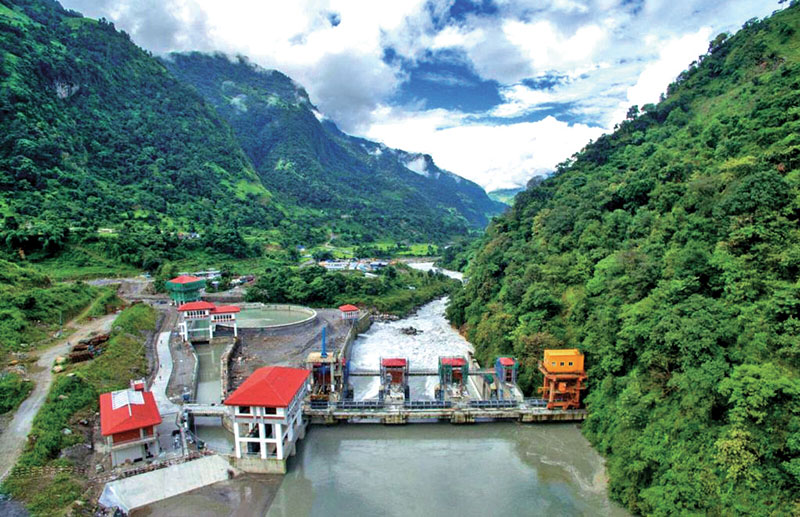‘Nepal needs to promptly tap its hydro potential’
Kathmandu, January 19
The country can reap enormous socio-economic benefits if it is able to harness its hydro electricity potential to the optimum level without delay as the South Asian economies have been growing at a rapid pace and positive co-relation between power demand and accelerated growth can transform the landscape of energy trade in South Asia.
However, the country will not be able to take advantage of this scenario if there is a delay in capacity addition. For instance, if project implementation is delayed by five years, not only will the country lose the earnings from power exports in that period, it will also have to pay for the power that it imports until the projects are implemented, says a report titled ‘Economic Benefits from Nepal-India Electricity Trade’ prepared by Integrated Research and Action for Development (IRADe) and South Asia Regional Initiative For Energy Integration (SARI/EI) with support of USAID.
The report unveiled today has said that Nepal will be able to generate Rs 44 billion in revenue by 2025 and Rs 310 billion by 2030 from electricity trade as demand for hydro electricity — a clean source of energy — is bound to increase. If project implementation is delayed, the country will be net importer of electricity and will have to spend more to purchase power. Currently, the country has been importing around 450 megawatts of electricity from India to manage its power deficit. However, Nepal has planned to export electricity to India and gradually to the regional power market from fiscal 2021-22.
There will be certainty for regional economies and Nepal’s domestic market to plan businesses accordingly if such projects are implemented in a timely manner. So, Nepal, without much delay, must cash in on the advantage of rapid economic growth of the region by ensuring cheap, clean and reliable power supply to the power-hungry South Asian region and especially to the Indian market, as per the report.
If project development is accelerated, it will contribute significantly to the country’s economy. The share of hydropower in gross domestic product will hover around 39 per cent by 2045 if Nepal can generate 34.4 gigawatts of power by then, while delayed capacity addition will result in only 14 per cent contribution to the economy by the same time.
The regional economies will opt for other sources like solar and wind or look elsewhere for energy if Nepal fails to assure them the country will harness its hydropower potential at the optimum level.
The country will require around Rs 2,596 billion to develop 18.6 gigawatts of power by 2030 and Rs 4,812 billion to exploit 34.4 gigawatts of hydropower potential, as per the study. Nepal itself has huge possibility to increase consumption, as the share of electricity in the total energy demand of the country is merely two per cent.
Unveiling the report, Swarnim Wagle, member of National Planning Commission, said that lack of reliable power supply has been identified as the key constraint to economic growth and is also responsible for increasing the cost of production to a large extent. He opined that abundant supply of clean and reliable power through hydro sources will not only drive economic development but also improve the country’s ranking in human development index.
The report has assumed that the per capita electricity consumption in Nepal will hover around 476 kWh (current regional average) if Nepal can harness around 10.6 gigawatts of hydroelectricity by 2025.
Michael Gonzales, charge d’ affairs of the US embassy in Kathmandu, emphasised that South Asian leaders should create a conducive environment for electricity trade/exchange through coordinated policy measures, effective regulatory environment and robust infrastructure like cross-border transmission line, power grids synchronisation across the region.
The US government has been providing support to develop infrastructure and diagnose the policy/legal impediments in development of energy sector through Millennium Challenge Corporation in Nepal. Despite having enough potential, South Asia’s energy consumption is just 500 kWh, which is far below the global average of 2,800 kWh.
Also speaking at the event, Mala Narendra, second secretary of the Indian embassy in Kathmandu, highlighted that the South Asian economies have been facing negative impacts due to energy deficit though the region is endowed with vast potential of clean energy. “Only 14 per cent of the total potential has been harnessed so far,” she added. She further said that energy trade is a win-win opportunity for both Nepal and India and also shed light on the possibility of exchange of electricity between Nepal and India as their seasonal load pattern varies.






